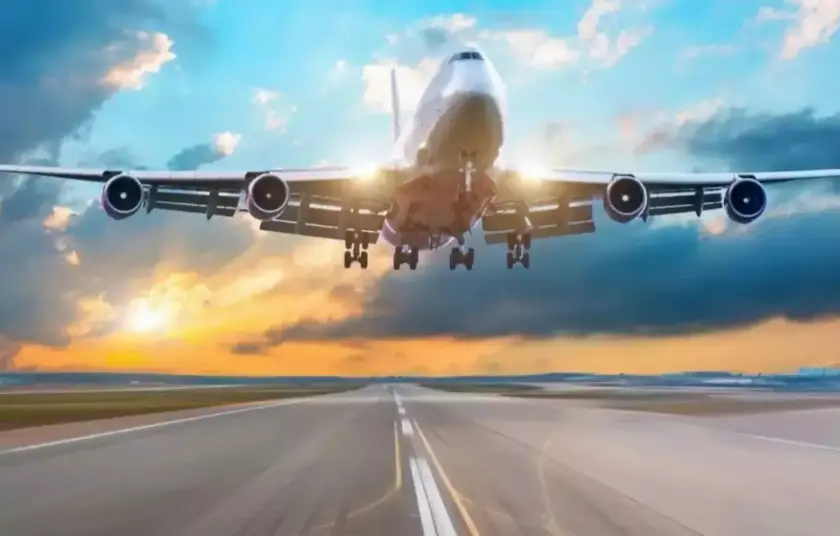The world has witnessed unprecedented changes in the past couple of years, with the global air travel industry facing its most challenging period during the COVID-19 pandemic. As nations grappled with the consequences of the virus, global air traffic plummeted, causing significant disruptions to the aviation sector. However, recent reports suggest a noteworthy rebound, with global air traffic reaching an impressive 94% of pre-pandemic levels in 2022[^1^]. In this article, we explore the factors contributing to this resurgence, the challenges faced, and the future outlook for the aviation industry.
Pre-Pandemic Air Traffic Levels
Before delving into the current state of air travel, it’s crucial to reflect on the vibrant period preceding the pandemic. In 2019, global air traffic was soaring, with millions of people taking to the skies for business, leisure, and other purposes. The aviation industry was a key player in the global economy, contributing significantly to international trade and tourism.
Impact of the COVID-19 Pandemic
The onset of the COVID-19 pandemic brought about a stark contrast, leading to an abrupt and severe decline in air travel. Travel restrictions, lockdowns, and fear of the virus prompted people to stay grounded, resulting in unprecedented financial losses for airlines and related industries[^2^].
Signs of Recovery
Despite the challenges, recent data indicates a remarkable recovery in global air traffic. Passengers are regaining confidence in air travel, contributing to the resurgence of the aviation sector. Various factors, including the rollout of vaccines, easing of travel restrictions, and pent-up demand, have fueled this recovery.
Challenges Faced During the Recovery
While the recovery is promising, the aviation industry is not without its hurdles. Ongoing travel restrictions, economic uncertainties, and operational challenges pose significant obstacles for airlines striving to return to pre-pandemic levels of profitability and efficiency.
Regional Variances in Air Traffic Recovery
The recovery is not uniform across the globe, with regional differences in the pace of resurgence. Some continents are experiencing a faster rebound than others, influenced by varying vaccination rates, government policies, and economic conditions.
Technological Innovations in Aviation
Amidst the recovery, the aviation industry has embraced technological advancements to enhance safety, efficiency, and the overall passenger experience. From contactless check-ins to the use of artificial intelligence in flight operations, these innovations are reshaping the future of air travel.
Environmental Considerations
As the aviation industry rebuilds, there is a growing emphasis on sustainability. Airlines are increasingly adopting eco-friendly practices and exploring alternative fuels to reduce their carbon footprint. This shift towards greener aviation aligns with global efforts to combat climate change.
Role of Government Policies
Government interventions have played a pivotal role in supporting the aviation industry during the crisis. Financial aid, regulatory adjustments, and policy changes have been implemented to facilitate the recovery of airlines and related businesses.
Future Projections for Global Air Traffic
Industry experts offer diverse opinions on the trajectory of air travel recovery. While optimism is prevalent, challenges such as evolving variants of the virus, geopolitical tensions, and economic uncertainties continue to influence future projections.
Success Stories in the Aviation Industry
Amidst the challenges, there are success stories within the aviation industry. Companies that have adeptly navigated the changing landscape through strategic innovations and adaptability serve as inspiration for the broader sector.
Consumer Behavior Shifts
The pandemic has reshaped consumer behavior, influencing travel preferences and priorities. Understanding these shifts is crucial for airlines and service providers seeking to meet the evolving needs of passengers in a post-pandemic world.
Insights from Industry Experts
To gain deeper insights, we reached out to industry experts for their perspectives on the post-pandemic air travel scenario. Their valuable insights provide a nuanced understanding of the challenges and opportunities facing the aviation industry.
In conclusion, the rebound of global air traffic to 94% of pre-pandemic levels signals a positive turning point for the aviation industry. While challenges persist, the resilience and adaptability displayed by airlines, coupled with advancements in technology and a renewed focus on sustainability, position the sector for a promising future.
FAQs
- What factors contributed to the recovery of global air traffic?
- The recovery is attributed to factors such as vaccine rollouts, easing of travel restrictions, and pent-up demand.
- Are all regions experiencing the same pace of air traffic recovery?
- No, regional differences exist due to varying vaccination rates, government policies, and economic conditions.
- How are airlines addressing environmental concerns in the post-pandemic era?
- Airlines are adopting eco-friendly practices and exploring alternative fuels to reduce their carbon footprint.
- What role do government policies play in supporting the aviation industry’s recovery?
- Government interventions, including financial aid and regulatory adjustments, have been crucial for the industry’s recovery.
- What technological innovations are shaping the future of air travel?
- Innovations include contactless check-ins, artificial intelligence in flight operations







